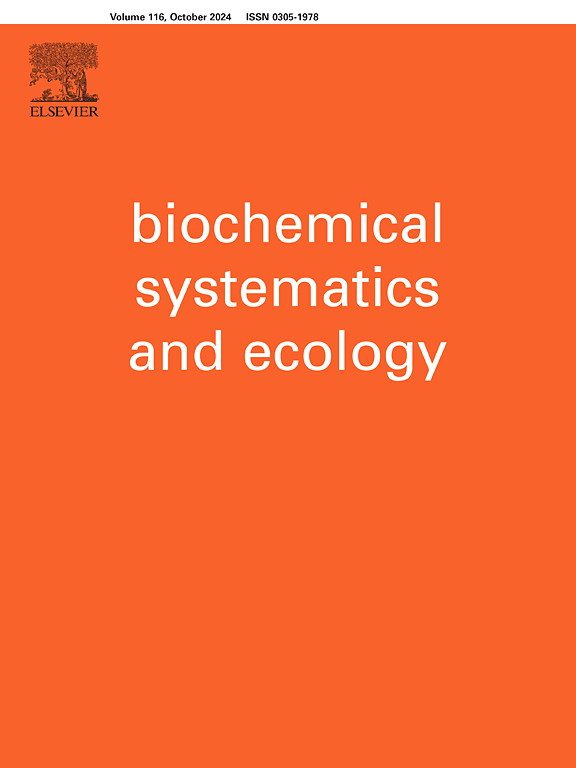Chemical constituents from the pericarps of Zanthoxylum bungeanum Maxim. and their chemotaxonomic significance
IF 1.4
4区 生物学
Q4 BIOCHEMISTRY & MOLECULAR BIOLOGY
引用次数: 0
Abstract
The phytochemical investigation of the dry pericarps of Zanthoxylum bungeanum Maxim. led to the isolation of 24 known compounds (1–24), including nine types of structural skeletons. The structures of the compounds were determined by comparison of their physical and spectroscopic data with those reported in literatures. Compounds 13, 22, and 24 were found for the first time within the genus Zanthoxylum, while compound 23 was previously unreported in Z. bungeanum. The chemophenetic significance of isolates was meticulously introduced. Interestingly, compounds 3, 4, and 6 showed significant antimicrobial activity against both normal and drug-resistant strains of Escherichia coli, with their effectiveness comparable to the well-known botanical antibacterial drug berberine.

求助全文
约1分钟内获得全文
求助全文
来源期刊

Biochemical Systematics and Ecology
生物-进化生物学
CiteScore
3.00
自引率
12.50%
发文量
147
审稿时长
43 days
期刊介绍:
Biochemical Systematics and Ecology is devoted to the publication of original papers and reviews, both submitted and invited, in two subject areas: I) the application of biochemistry to problems relating to systematic biology of organisms (biochemical systematics); II) the role of biochemistry in interactions between organisms or between an organism and its environment (biochemical ecology).
In the Biochemical Systematics subject area, comparative studies of the distribution of (secondary) metabolites within a wider taxon (e.g. genus or family) are welcome. Comparative studies, encompassing multiple accessions of each of the taxa within their distribution are particularly encouraged. Welcome are also studies combining classical chemosystematic studies (such as comparative HPLC-MS or GC-MS investigations) with (macro-) molecular phylogenetic studies. Studies that involve the comparative use of compounds to help differentiate among species such as adulterants or substitutes that illustrate the applied use of chemosystematics are welcome. In contrast, studies solely employing macromolecular phylogenetic techniques (gene sequences, RAPD studies etc.) will be considered out of scope. Discouraged are manuscripts that report known or new compounds from a single source taxon without addressing a systematic hypothesis. Also considered out of scope are studies using outdated and hard to reproduce macromolecular techniques such as RAPDs in combination with standard chemosystematic techniques such as GC-FID and GC-MS.
 求助内容:
求助内容: 应助结果提醒方式:
应助结果提醒方式:


